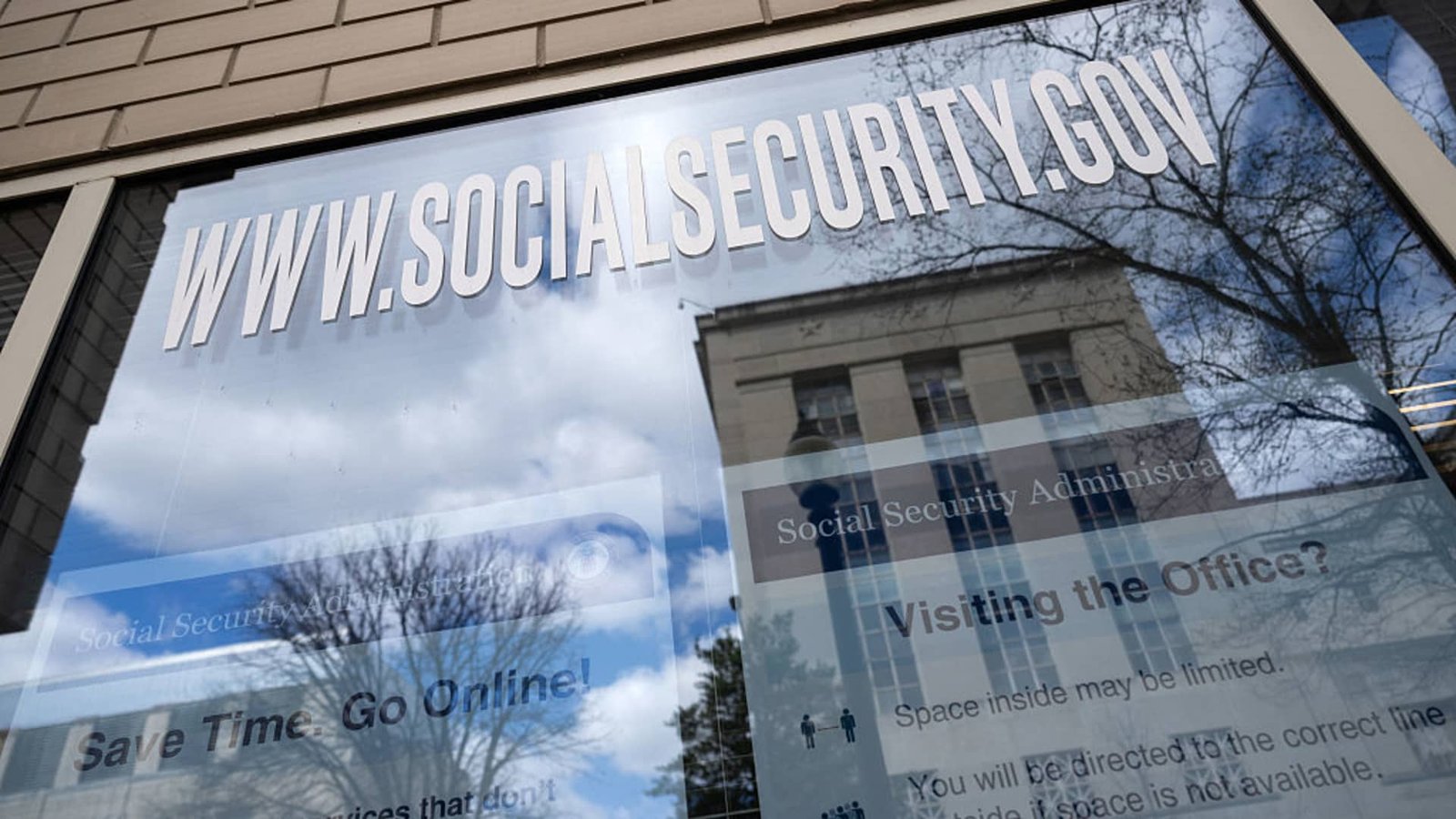A Social Security Administration office in Washington, D.C., March 26, 2025.
Saul Loeb | Afp | Getty Images
The trust fund Social Security relies on to pay retirement benefits may be depleted in 2033, according to an annual report released by the Social Security Board of Trustees on Wednesday. That is unchanged from last year’s projections.
At that time, 77% of those benefits will be payable, according to the report.
Social Security’s combined trust funds — the Old-Age and Survivors Insurance and Disability Insurance trust funds — will have enough revenue to pay scheduled benefits and administrative costs until 2034, according to the report. That is one year earlier than projected last year.
At that time, 81% of the combined benefits will be payable, according to the new projection.
While the combined depletion date is used to gauge the Social Security’s solvency, current law prohibits joining those funds. However, Congress has authorized shifting of the funds in the past when there have been trust fund shortfalls.
The Disability Insurance trust fund will be able to pay full benefits through at least 2099, according to the report.
More from Personal Finance:
Senate version of ‘big beautiful ‘ bill calls for $6,000 senior ‘bonus’
‘SALT’ deduction in limbo as Senate Republicans unveil tax plan
How Senate GOP ‘no tax on tips’ proposal differs from House plan
Medicare’s Hospital Insurance trust fund, which is associated with Medicare Part A and pays for certain health care services, will be able to pay full benefits until 2033, according to the Medicare trustees’ report that was also released on Wednesday. That is three years earlier than projected last year.
At that time, 89% of benefits will be payable.
The new Social Security trustees report takes into account the effects of the Social Security Fairness Act, according to Kathleen Romig, director of Social Security and disability policy at the Center on Budget and Policy Priorities. That legislation, which enhanced benefits for certain public pensioners, went into effect in 2025. Experts anticipated the law would move the program’s depletion date closer.
However, new tax proposals, tariffs and deportations were not included in the new trustees’ report, which is based on assumptions dating back to December, Romig said. Those three developments may “pose serious threats to Social Security’s financing,” she said.
would rather raise taxes than cut benefits, according to the National Academy of Social Insurance, AARP, the National Institute on Retirement Security and U.S. Chamber of Commerce. The groups polled more than 2,200 Americans.
“Across party lines, generations, income, education, the American people are strongly opposed to cutting Social Security,” said Rebecca Vallas, chief executive of the National Academy of Social Insurance.
The most popular policy option Americans want to see would be eliminating the payroll tax cap for earnings over $400,000, according to the survey. Currently, workers contribute payroll taxes to Social Security for wages up to $176,100. That cap would stay in place, while the payroll levies would be reapplied starting at $400,000 for higher earners.
Survey respondents were also largely in favor of gradually raising the payroll tax rate from 6.2% to 7.2% for both workers and employers.
“They want to see lawmakers secure the program by raising the revenues that are needed to keep the system strong for generations to come and to improve benefits,” Vallas said.



